|
In March, I started to talk with you about the concept of practice and what it means when you practice something so long it becomes a habit.
If you decided that what you’ve been practicing--whether an unhealthy behavior, an unhelpful way of thinking, or an absence of any healthy behaviors whatsoever--is no longer working for you and you’re ready for change, then you’ll want to read today's post. Because here, I’ll break down for you exactly what steps you need to take in order to give yourself the best possible chance to succeed at starting and then maintaining a new, healthy practice--even if you're totally scared to start or afraid to fail.
0 Comments
Back in the year 2000, when I was a fledgling personal fitness trainer, I started to study coaching. I could tell that my weight-loss clients were not finding it easy to stick to recommendations like walking more, eating less sugar, drinking less alcohol. I knew they wanted to change, but they didn’t seem able to. I wanted to help. Luckily, two behavioral researchers, Prochaska and DiClemente, put their brilliant minds together in the early 1980s and delineated a simple little theory that would go on to help millions of people work through sometimes difficult lifestyle behavior changes. I wrote an article in 2007 to help fitness professionals learn how to use Prochaska & DiClemente’s Transtheoretical Model of Behavior Change (which is commonly referred to as “The Stages of Change”). Now, I’m going to help you learn how to use this brilliant little theory in your own life, when you’re toying with the idea of changing some behavior or adding a new creative or healthy practice to your life. 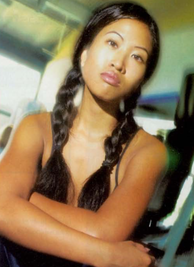 She's not resisting change--she's just not at the right stage to attempt it. She's not resisting change--she's just not at the right stage to attempt it. The Stages of Behavior Change There are 5 stages in the Stages of Change. To illustrate the stages clearly, let’s take “adding a yoga practice to your wellness routine” as a possible behavior. Precontemplation: In this stage, the concept of starting a yoga practice is not even on your radar. You might hear your friends talk about it and think, “Oh, that’s nice for them” and then not even give it a second thought. In other words, you’re nowhere near actually starting to practice yoga. It’s not interesting, you don’t see the benefits, and you have no interest at all. What we practice is what we get good at. You likely already know this, but have you really thought about what that means in your life? To your own wellbeing? In your relationships?
Maybe you spend the majority of your time worrying. Or serving others. How much time are you devoting to holding grudges? Is putting your health first (or last) a regular top contender in your daily list of things to do? You can become habitual and masterful at anything you spend enough time practicing. Whether an instrument, a sport, or a way of thinking or behaving, everything we practice sets electrical patterns or grooves into our central nervous system. Over time, and with enough practice, any action or reaction to a situation becomes stuck in those grooves, habitual, automatic. And when what you are practicing is anger, hate, fear, prejudice, judgment, or self neglect . . . imagine what happens in your body as you wake up and default to those ways of feeling and being every day. It’s Valentine’s Day. True, a “Hallmark Holiday” for many, but a good excuse nonetheless to look at Love.
Love is a vast topic, and perhaps the only topic truly worth discussing. Love is, in the end, everything. But love is also incredibly misunderstood. The concept of love that many of us grow up with is (quite unintentionally, most of the time) conditional: The basic assumption is that “I will love you when/if you do this.” This assumption is not typically stated out loud (although sometimes it is brutally drilled into kids’ bodies-minds), and most parents really would never mean or think such a thing. But whether they are aware of it or not, parents’ actions and seemingly benign statements can sound to a kid like... I’ve recently started a creative writing group at my house. We eat homemade scones, chat about writing topics, and do some creative exercises to get the words flowing onto the page.
The other day, one member of the group seemed distressed that I would be the only one responsible for organizing our gatherings: “Isn’t it a lot of work for you to plan and host us every time?” I looked at her with what can only be described as shock. And then I realized why she might interpret the planning and hosting of such an event as a relative burden. She has a family, her own service business, and a deeply rooted local community to tend to that she’s built over 20 years. Therefore, she has lots of roles and possible demands on her time and energy. Adding one more ounce to that load might, indeed, feel as though it could break the camel’s back, especially if she weren’t careful to engage in self-care first. As opposed to my new friend, however, I have no family here. I have been on a long-overdue sabbatical from a draining desk job that I took after we moved, so I have not had students or clients to tend to since last spring. I have had no local community and no friends at all, outside of my wonderful husband, since we moved overseas 4 years ago. (FOUR years!) Because the concept of “coaching” is still so nebulous to the majority of folks, I thought I’d whip up this quick list of comparisons that should help differentiate it from counseling or therapy.
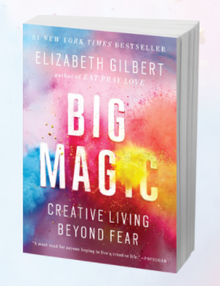
First, let me say than I loved Eat, Pray, Love. Both the book and the entirely adequate adaptation made me laugh, cry, and feel pain and joy.
Second, let me also say that, as a marriage skeptic who actually got married a year before I found Committed, I relished reading that book more than any other non-fiction book I had until that point read. What a gift to independent, intelligent, not-the-marrying-type women everywhere, like me. It’s a splendid work of research, writing, and storytelling. And I don’t find it meaningful at all that Ms. Gilbert’s marriage has since ended. (Well, it’s meaningful to her and her former husband, but it says nothing about the quality of the book or the quality and validity of her actions.) Finally, though, today, I want to talk about Big Magic. Because this, of the three* books I have read by the lovely and wonderful Ms. Gilbert, is the book that contains As I revealed in this post on overcoming sugar addiction [there's a link at the bottom of this post], I am deeply into trying to stay in recovery from an addiction that covered up some really negative emotions. And wow, has it been a lesson. I mean, I have known and dated addicts my whole adult life, and I have studied and had a deep intellectual understanding of addiction for decades, but never did I actively try to heal my own because I conveniently kept myself unaware of the important/necessary emotions I was covering up. Now that the process of uncovering and healing the emotions has begun, so has the process of sticking to my recovery from addiction.
These are my basic strategies, probably subject to change. I am no expert, just a person dealing with healing and wanting to share what I do.
For a while now, I have been saying that I’d write about ENFPs because they fascinate me (or I should say, “we” fascinate me). You probably want to know, what is an ENFP?
To understand what it is, you need a little background. Back in the '90s and early '00s, you might have heard of the Myers-Briggs Personality Inventory and/or read a book called Please Understand Me II. Both resources include the comprehensive personality test commonly known as the Myers-Briggs. I think a friend introduced me to it in about 1999, and I continue to be blown away by the accuracy of the description of this, my personality type, over the subsequent decades. I wanted to create this simple step-by-step post about how to actually see in your timeline the posts you want to see from the Facebook pages you have “liked” and “followed,” because it’s not automatic that they will show up. Facebook seems to limit how many “likers” and “followers” actually see pages’ posts so that page managers are incentivized to pay Facebook to “boost” their posts onto likers' and followers' timelines. But there is something you can do to increase your chances of seeing the content you want... Four Tips to See Your Liked Pages’ Posts in Your Facebook Timeline
[Update December 2023: This has been my most popular blog post for 6 years running. If you're reading this now, pop a comment below letting me know what brought you here today.]
Peeling back the layers of an onion. It’s a metaphor for life and growth that might not be perfect but never gets old. As you might know, my life has been dedicated to mind-body healing. Growth on a deep level. Investigating those things that hold us all back from getting the life and love we want. The most poignant part of the onion metaphor for me is that peeling onions can sting and make you cry. With every layer of adult defenses we peel back, we can potentially face great pain and lots of tears. But it’s worth it, because life, just like an onion, is so tasty when its outer layer has been peeled way and we decide to use it in a way that is totally different from how it started. With life, it seems it’s only in the unpeeling (discovering), chopping (analyzing), and making us cry (healing) that we learn, grow, and become our true selves. Is it uncomfortable? Hell yes, just like peeling and chopping an onion can be. Is it worth the discomfort? As I enter the world of the coach again, I find myself pondering the differences between coaching and teaching and what they mean to me.
I don’t think I ever bothered to investigate their differences very closely before, because I had never spent so much time teaching in my life. But now that I have 17+ years of teaching under my belt, I can pick apart the qualities of teaching and coaching quite well. These are my realizations.
But the truth of the matter is, I am hopeful that the process I am going through right this minute (and have gone through about 43,200 minutes already) will cease to feel desperate, not remind me of crack addiction, no longer have me mourning, allow me once again to eat meals with my husband, and have me not feeling as though I am being tortured most hours of most days of the week.
I’m hopeful that I will, indeed, overcome the sugar addiction that I have been unconsciously feeding for over a decade now. It went into overdrive when I met and married another sugar addict (isn’t that how it always goes?) and discovered I needed to drop sugar to heal a damaged gut (more on that later).
At about the same time, I was told I was a likely candidate for Marfan Syndrome, a potentially deadly disorder of the aortic valve. I was pulled from daily gym class and spent that hour each day in the library with the "special" kids. I was required to have echocardiograms and EKGs every 6 months for the foreseeable future, if not the rest of my life.
I don't remember if it was a few months or a year later, but sometime after that initial diagnostic period, I was fitted for a back brace. I was expected to wear it 23 hours a day until I stopped growing--approximately 6 years. Yeah, right. Sometimes it's nice to take a minute and remind myself of all the many reasons why I love yoga. Because I'm hyper flexible, I often have to forgo extensive asana practice in favor of targeted strength training for my hips, shoulders, back, and core.
But yoga is my rock, the calm eye of the hurricane, the lighthouse pointing the way home when seas are rough and skies are menacing, the thing I return to after allowing myself to get scattered in the ego-driven winds circling us all at any given time. And here are some answers to the question, "Why do I love yoga?": Now that I am in my 40th year on this planet, women ask me all the time about weight loss, healthy exercise, and being fit when you're over 40. I am more than happy to coach women through the process of adopting and adhering to an effective fitness plan, even those who have never worked out or experienced the improved mood, energy, and metabolism that accompany an effective fitness routine. The older we get, the more important effective fitness training is for our mental and physical wellbeing. Thus, when I was approached by Outreach NC, a broad-ranging lifestyle publication for active adults, to contribute to their May 2014 issue, I jumped at the chance. You can download and read my contributions in this article by Michelle Goetzl entitled "The Gift of Health" by clicking the link at the bottom of the post. In it, I touch on:
If you know someone who is 40 or older, please share this piece and know that, yes, women over 40 can be as fit and healthy as women at any other age!
Ah, self-massage, also known as self myofascial release (SMR), is a method of giving your aching muscles a serious rub down without having to pay much money or even get undressed.
I talk about my homemade tool for self-massage in a piece I wrote at haubermethod.com I called "My Favorite Cheap DIY Massage." (You can find a link to that page at the end of this post.) As a fitness pro with decades of experience and a really crooked spine that causes all sorts of muscle imbalances on a daily basis, I need self-massage or I'd be 1) in pain all the time, or 2) spending a fortune--more than I already do--on professional massages. The gift of my favorite cheap DIY massage is just that: It's cheap, and I can do it myself, no matter where I go. If Jillian Michaels hates her butt, then you should too.
That's the underlying message behind this news from Ms. Michaels [this was an Examiner article and it's no longer live so I removed the link]. It's just one more piece of evidence that
I spent years hating my body. It was never going to be good enough because I was comparing it against some unrealistic ideal (the origins of which I still don't know). I finally got smart, though, and realized that my body was here not to look a certain way but to do certain things, such as... It's the end of the year. Already, I'm hearing people talk about New Year's Resolutions. For many people, resolutions revolve around one thing and one thing only: getting fit. And for many people these days, yoga classes seem a rather non-threatening point of entry on the path to greater fitness.
I applaud their interest: yoga is an incredible method for getting in touch with your body, uniting the body and mind, and learning how to breathe fully. So I'd like to give beginning yoga students some tips on how to start off their yoga journey the best way possible. Every yoga class is different. Well, not so if you go to a Bikram (or "hot yoga") class, or if you're learning the Ashtanga series. But most beginners are not headed straight for the 105-degree oven that is Bikram or the rigid, extremely disciplined practice of Ashtanga. Most would-be yoga students are interested in learning some poses, sweating a little, and feeling like they did something good for themselves. Beginners are more likely to head for a Yoga Flow class or a Hatha Yoga class. And I have to reiterate--every single one of them will be different. So how do you know, when you see a class on the schedule, what you're getting into? Did you know that the secret to increasing your health and wellbeing is to use effective SMART goals? When people set out to achieve health, wellness, or fitness goals, they mistakenly focus on outcomes (i.e., "I want to lose 15 Ibs," or "I want to lower my cholesterol," or “I want to live without back pain.”). Successful clients instead focus on actions—things that they choose to do, practice, or take part in. Well-chosen actions lead naturally to the ultimate outcomes people seek. They are the centerpiece of what we wellness coaches call SMART goals. These goals are: S = Specific. "I want to feel better" is a vague outcome. "I will walk at 3.6 mph for 30 minutes on Monday and Friday" is a specific goal that will likely help you achieve the outcome of “feeling better.” M = Measurable. "I will walk today" is too loose. Does walking to the car, which is 20 feet away, count? "I will walk at 3.6 mph for 30 minutes on Monday and Friday" is a measurable goal—there is nothing vague about it. A = Actionable. "I will lose 20 pounds" is not an action. Can I look at you and see that you are losing 20 pounds, right at this moment? No. But if you say, "I will walk at 3.6 mph for 30 minutes on Monday and Friday" and it is Monday and I see you on the treadmill, I can see that you are likely on your way to losing that 20 pounds. R = Realistic. "I will work out for an hour every day this month" is not realistic. If you set your goal too high, and then you don't succeed, you will feel bad about yourself. Set your goal at a reasonable level to make sure you succeed. After all, success breeds success. Achieving even one tiny action goal—perhaps "I will walk at 3.6 mph for 30 minutes on Monday and Friday this week"—will set you up for bigger and better future goals. Always start small. T = Timed. "I will work out" is not a SMART goal because it has no timeframe. In order to reach a goal, you must have a set time within which you will complete that goal. Set new action goals each week, and make sure your goals can be accomplished by your next goal-setting date. 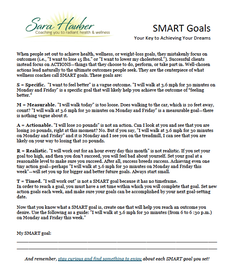 Click the image to download your free SMART goals worksheet. Click the image to download your free SMART goals worksheet. Now that you know what a SMART goal is, download the SMART goal worksheet I created and craft a SMART goal that will help you reach an outcome you desire. Be sure to follow the tips in my super-explanatory post about how to make sure you can start and maintain a new practice first. And remember, stay curious and find something to enjoy about each SMART goal you set! Looking perfect or feeling good. That struggle has been on my mind a lot lately as I welcome a host of new internal and external conditions that have a direct impact on my identity as a "health and fitness professional":
The items in the above list have undermined the major belief that drove me to exercise obsessively for the first 10 years of my professional fitness career: my body was really messed up from scoliosis and other health issues, and I had to work really hard to make it appear "perfect" or I wouldn't be respected, successful, or loved. I think perhaps a majority of women are led to believe something very similar, and that is what countless "love your body" campaigns and groups are designed to help defuse. But as anyone who has made a major shift in her life knows, old beliefs and thought patterns die hard. Really hard. It takes more than a simple ad campaign or a support group to change our core beliefs.
Especially when every bit of advertising and social conditioning in our society says, "Women are their bodies, nothing more, and we demand that those bodies appear PERFECT!" And as a professional in the fitness and wellness industry (and, sadly, also in "Westernized" yoga)? Forget about it: We are ALL supposed to be perfect icons of bodily perfection: no body fat, no cellulite, no structural malformations, no outward appearance of aging, perfect curves in exactly the right places, and energy so abundant we work out hours a day without a care in the world. Hmph. I don't think anyone can adhere to those expectations without being sick and obsessed. So here I reveal the strategies that work to ensure that I don't fall into the "trying to appear perfect" trap again. If you recognize yourself struggling with anything I've mentioned so far, maybe one or more of these can help you, too.
When faced with the choice to "look perfect" or "feel good," I'm opting for feeling good from here on out. What about you? ** I had so many wonderful, heartfelt comments to this post on its original Wordpress page. It's too bad I could not preserve them when I moved the site. Perhaps new readers would like to add some helpful comments of their own? "Why do I teach yoga?"
It's a question I often ask myself, because sometimes I get lost and need to find my way back. I get caught up in the very American view of yoga that promotes yoga practice as a way to lose weight and work on one's body shape and size. I feel pressured to teach a fast, flowing, aerobically stimulating class even when I know that the students asking for such a class are not ready for it physically. I let myself fall into the trap that I have fallen into since I was a youngster: trying to be what people want me to be instead of what I am. In the last week, during my lovely yoga retreat in Puglia, Italy, I found myself falling into the traps that I just described, and I had to pause and ask myself again, "Why do I teach yoga?" Below are my answers. The law of giving and receiving is one of what Deepak Chopra calls The Seven Spiritual Laws of Yoga. This law tells us that the universe is constantly nourishing us when we are nourishing it. When we give what we would like to receive, we actually get just that. For example, when we put love, gratitude, and joy out into the world by way of positive interactions, a welcoming demeanor, and random acts of kindness, we get all of those good vibes sent right back to us to receive. I feel particularly connected to this law after having taught a charity yoga class at Namaskar Yoga in Chicago’s Lakeview neighborhood. The entire experience exemplified the law of giving and receiving:
What could be more beautiful than that? We all, in fact, have a simple method for perpetuating this giving-receiving continuum every minute of every day. It’s called breathing, or pranayama. When you think about the act of breathing--how you are taking into your body these particles that had previously been swirling and twirling around outside of you, and then release them a moment later to take in breath anew--you can see how we humans are always giving to and receiving from the atmosphere in which we live. When we add consciousness or mindfulness to this typically automatic action, we deepen the practice of giving and receiving even more. Imagine: consciously breathing in love, joy, and kindness and intentionally breathing the same out into the world! How bright our smiles could be! How connected we could feel to our neighbors and friends! Just by sharing the simple act of breathing, colored with the beautiful qualities of love, joy, and kindness. We can also use the action of the breath as a metaphor and try to emulate its cycle of giving and receiving in other ways throughout our days. Recall that to experience the law of giving and receiving, you just need to be willing to give to others exactly what you’d like to receive. If your wallet feels light and you’d like to encourage abundance in your life, tip your waiter a little extra the next time you eat out. If you are desperately in need of some cheering up, extend some extra kindness and a smile to the bus driver as you board today. If you’re feeling alone and crave affection, reach out to an old friend and express your gratitude for their presence in your life. You’re telling the universe that everything you need, everything you crave, is already there inside of you--and the universe will respond in kind, giving you even more. Mr. Chopra gives us an excellent set of affirmations regarding the law of giving and receiving. It’s amazing how something so simple can be so profound. Ever since I can remember, I have gotten sick when I have been forced to work a solid "8-hour workday." I never drank coffee until I started working in the corporate world, as I tried to force my energy level to adhere to the false notion that a worker at a desk job for 8 hours is a productive one. Nothing could be further from the truth, but only recently have scientists and corporate bigwigs been catching on to that fact. It's been shown time and again that we humans need rest--and lots of it--to be at our best, cognitively, emotionally, and physically. We start to destroy cells and important muscle tissues as soon as we cross that line from "working optimally" to "being a little fatigued," and it's all down hill from there. The thing is, we humans cross that line after a much shorter time than 8 hours! As Tony Schwartz reveals in his excellent New York Times piece, "Relax! You'll Be More Productive," in as little as 90 minutes after an energetic high, we need a rest. The bottom line of the article, and what my body seems to have been telling me for years, is: Relaxation improves performance.
And by performance, I'm talking not just about work. I'm talking thinking/reasoning skills, emotional skills, and life skills that are crucial to "performance" in relationships, day-to-day interactions in public, and self-care. We need vacations and time away from the "grind" sprinkled heavily throughout our days, or we just don't feel and act right. If we don't get that needed time away, addictions are a frequently used crutch to help us push through, and we all know that addictions can have some dire consequences. I realized after trying to work for other people many times that I just couldn't play by someone else's rules (which required someone else's schedule) without getting dead sick. It happened every time! My body told me loud and clear, "Sara, you need regular relaxation built into your days or you'll die." Or at least, that's what it felt like. So I put a plan in motion to get out of the 9-to-5 (or, more often, 7-to-6) rat race and into a life that better suited my values: healthy life, healthy relationships, healthy body (none of which I had when working the corporate gig). As we emerge from winter to spring, keep your needs for relaxation in mind. Honor your body's rhythms. And if you think you need some good brainstorming to come up with ideas for how to find that relaxation even during a 9-to-5 (or 7-to-6) gig, let me help. I can't give you answers, but I can ask you all the right questions to help you find what'll work for you. Now, isn't it nap time? I learned long ago, probably during one of my many self-help-book-reading jags, that expressing appreciation to others makes them feel really, really good, and it actually has a profoundly positive effect on relationships.
As I exponentially increased my expressions of appreciation and gratefulness--by consciously choosing to do so--I started to notice just how rarely I had heard such appreciation sent my direction. Such warm-and-fuzzy, heartfelt feelings of gratitude were apparently more rare than I ever imagined them to be, and I never would have noticed if I hadn’t made the concerted effort to increase my own delivery of these simple, yet meaningful, expressions. In my inbox last week, I received an e-mail from the leader of a women’s chorus that I belonged to in Chapel Hill, NC. Every week, this amazing woman sends out announcements of uplifting, healing, love-focused events, requests, and news items. Amongst the long list that day was a link to ArtofGratitude.com [sadly, the website is now defunct], described as “a free resource designed to help people create a daily practice of expressing gratitude.” |
To search all content for your favorite keywords, use the search bar below.
Categories
All
Archives
May 2019
|
||||||||||
|
To search all website content, use the search bar here.
|
This entire website and all of it contents are copyrighted to Sara D. Hauber, 2011-2024.
If you would like to use or reproduce any of the materials here, please contact Ms. Hauber for permissions. |

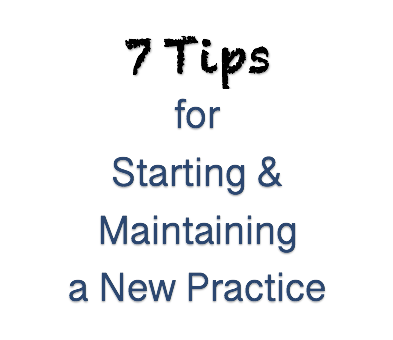
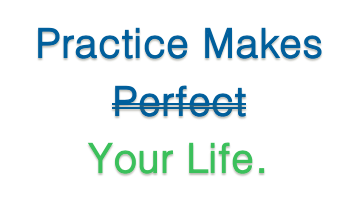




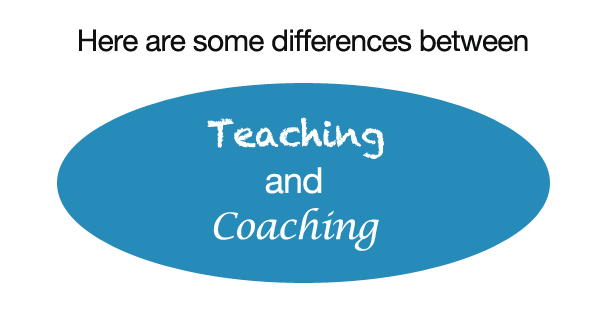


 RSS Feed
RSS Feed